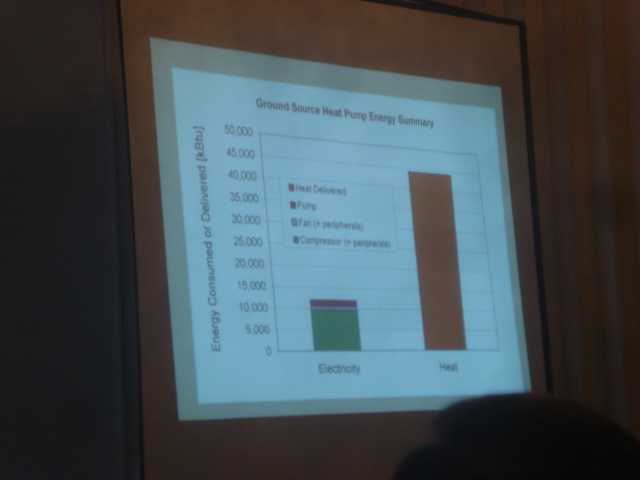| Larry: Built new and drilled a geothermal well. His house
has a massive central stone fireplace to retain heat. His south face is
glass, and the rooftop has photovoltaic cells with panel to sell excess
electricity back to CL&P.
|
| Bob: Has the same 2" diameter geo pipe in two (300'+-)
trenches under his back yard, since 1985 when he built his Deck type house.
He just installed a new $11,000 heat pump (including labor). And gets all
heat, AC and hot water perfectly. His energy efficient house includes small
ducts under floor slabs that circulate heat also to a central stone
fireplace. |
| In the 1970's my Dad helped built a deck house (in New York
State, while I was in college). The homeowner tried a new idea, and they
installed a concrete pipe some 100' long into the basement. They tried to
use the 50 degree coolness for air conditioning. But they did not use a heat
pump, so the air in the concrete pipe was insufficient for good climate
control. The inexpensive idea was a good one, but incomplete.
Perhaps that homeowner should run some geopipe in that culvert, and hook up
a heat pump! |
| John has two geothermal wells of about 300' each, and
photovoltaic cells. He has had no problems in the past 12 years. He has a
pond that he considered, but it was too distant to be practical. |
| Warren has an extremely well insulated 6000 sq. ft house.
He has about 500' of trench with three 1 1/4" pipes that give him AC and
heat. |
| John has two new trenches 225' long with three 1" dia. geo
pipes looped back in the same trench. He has propane back up, but has not had to use
it the past two winters since he built his 2400 sq. ft house. He monitored
performance for his residential LEEDS certification, and his COP always
ranged from 3.85 to 4.15 even with 30 degree soil temperature in March. He
presented his findings at the State Professional Engineers Annual Meeting,
showing us this chart:

It shows that for every 11,000 btu of electricity put into the heating
system, including air handler fan, pump and compressor, that 44,000 btu are
delivered. This is a Coefficient of Performance of 4.0. |
